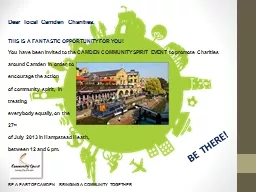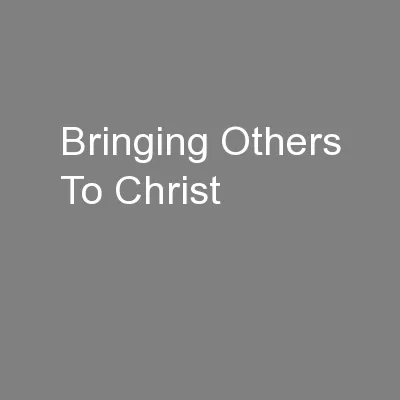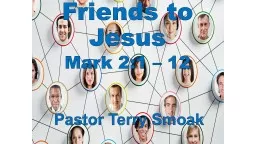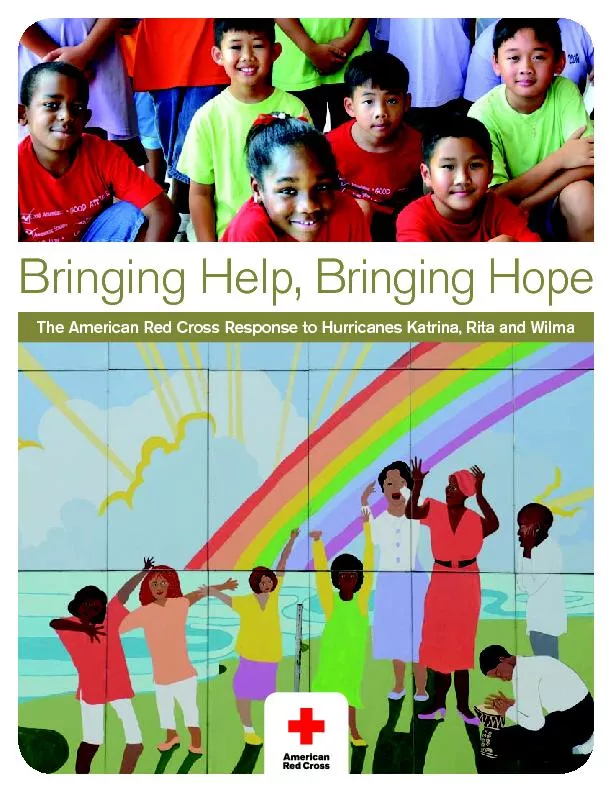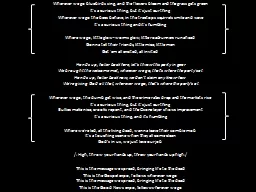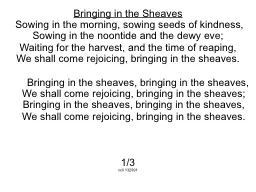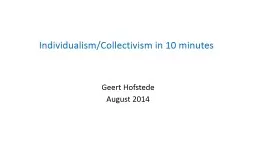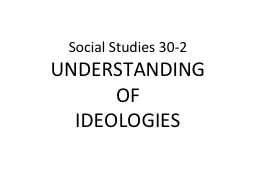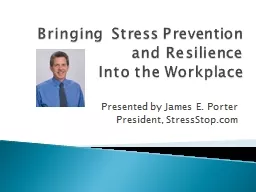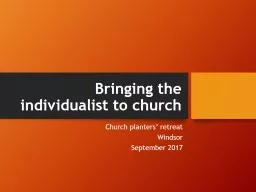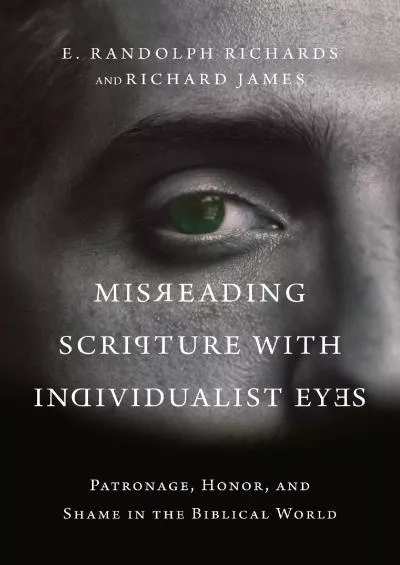PPT-Bringing the individualist to church
Author : liane-varnes | Published Date : 2019-06-22
Church planters retreat Windsor September 2017 To find ones genuine self is for many the most important quest The church has to relate to people who use themselves
Presentation Embed Code
Download Presentation
Download Presentation The PPT/PDF document "Bringing the individualist to church" is the property of its rightful owner. Permission is granted to download and print the materials on this website for personal, non-commercial use only, and to display it on your personal computer provided you do not modify the materials and that you retain all copyright notices contained in the materials. By downloading content from our website, you accept the terms of this agreement.
Bringing the individualist to church: Transcript
Download Rules Of Document
"Bringing the individualist to church"The content belongs to its owner. You may download and print it for personal use, without modification, and keep all copyright notices. By downloading, you agree to these terms.
Related Documents


